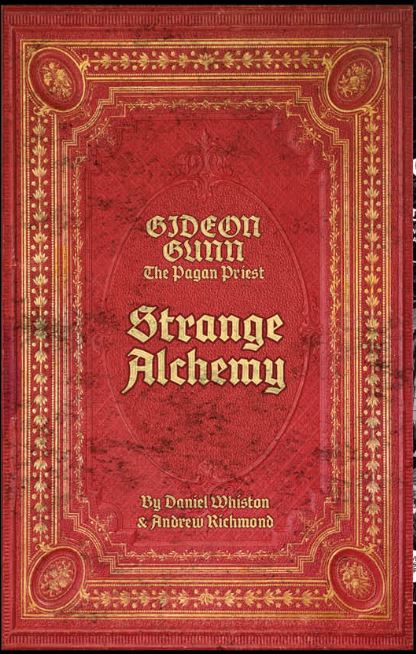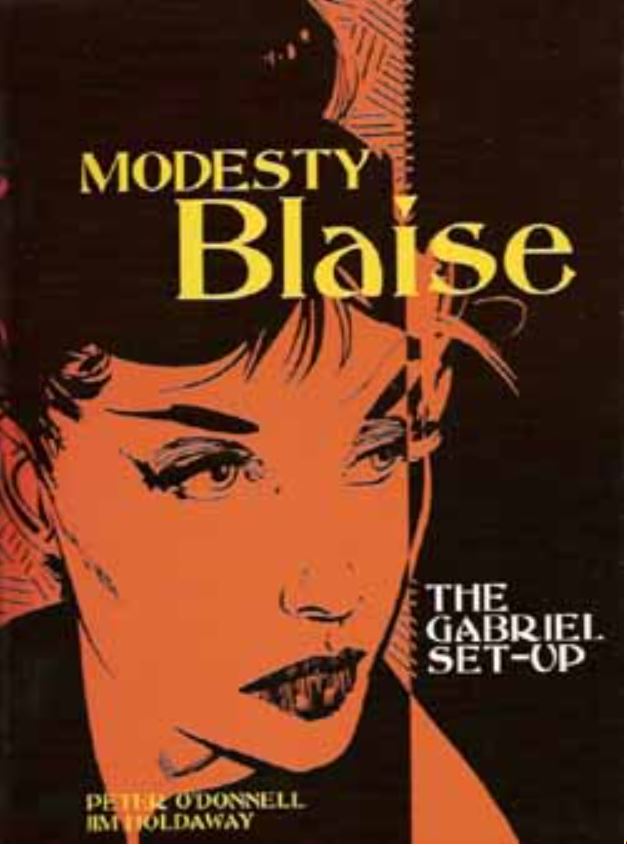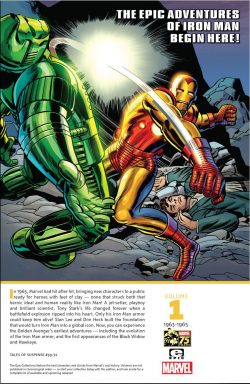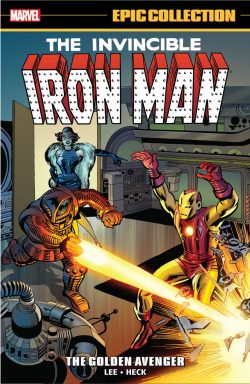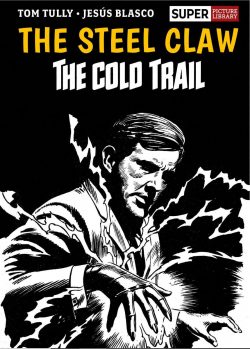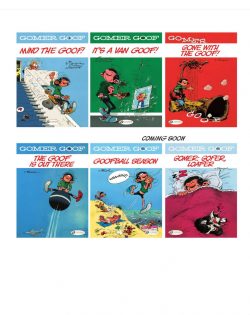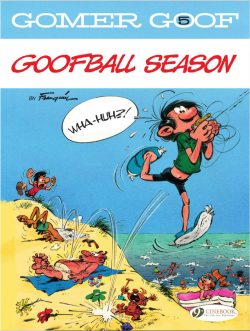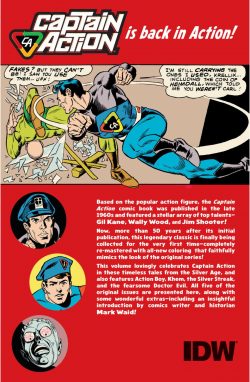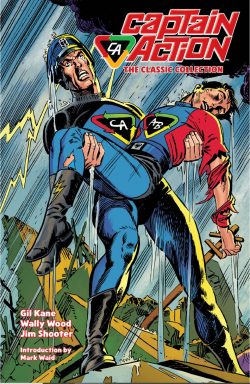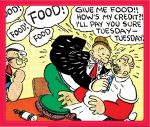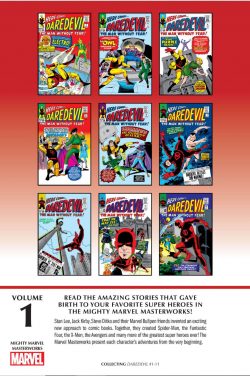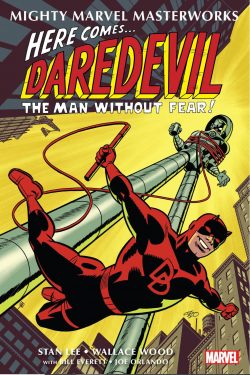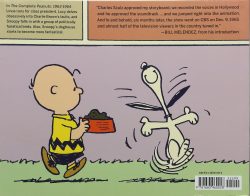
By Otto Binder, Jerry Coleman, Alvin Schwartz, Leo Dorfman, Robert Bernstein, Bill Finger, Curt Swan, Wayne Boring, Kurt Schaffenberger, Dick Sprang, Al Plastino & various (DC Comics)
ISBN: 978-1-84576-812-4 (TPB)
In America during the 1950s and early 1960s being different was a bad thing. Conformity was sacrosanct, even in comic books, and everybody and thing was meant to keep to its assigned and intended role.
For the Superman family and extended cast that meant a highly strictured code of conduct and parameters: Daily Planet Editor Perry White was a stern, shouty elder statesman with a heart of gold, Cub Reporter Jimmy Olsen was a brave and impulsive, unseasoned fool with a heart of gold – and plucky News-hen Lois Lane was nosy, impetuous and unscrupulous in her obsession to marry Superman, although she too was – deep down – another possessor of an Auric aorta. They were – of course – uniformly white and the Anglo-est of Saxons…
Yet somehow even with these mandates in place, talented writers and artists assigned to detail their wholesomely uncanny exploits managed to craft tales both beguiling and breathtakingly memorable – and usually as funny as they were exciting as seen in this second cunningly combined chronologically complete compendium. Here, collected in marvellous monochrome, are the affably all-ages tales from Superman’s Pal Jimmy Olsen #23-34 (September 1957-January 1959), Lois’s second try-out issue originally seen in Showcase #10 (September/October 1957) and #1-7 of her subsequent solo series Superman’s Girl Friend Lois Lane (March/April 1958-February 1959).
We commence with the Man of Steel’s Go-To Guy in three tales comprising issue #23 of his solo title: illustrated as almost always by the wonderful Curt Swan & Ray Burnley. ‘Jimmy Olsen’s Two Super-Pals’ was the first of three scripts by irrepressible Otto Binder, describing how our lad gains an other-dimensional Genie as another faithful Super-Friend. Of course with sinister radium bandits plaguing Metropolis there’s more to the cosmic companion than meets the eye…
Next comes ‘Jimmy Olsen, the Bearded Boy’ wherein boastful hubris and a magic potion inflict runaway whiskers on many Daily Planet staffers – even Clark Kent – prompting a flurry of face-saving secret feats from the identity conscious Man of Tomorrow.
As Jimmy’s series progressed, one of the most popular plot-themes (and most fondly remembered and referenced today by surviving Baby-Boomer fans) was the unlucky lad’s appalling talent for being warped, mutated and physically manipulated by fate, aliens, magic, mad science and even his friends …a fate which frequently befell Lois too, although Jimmy got far fewer marriage proposals (but not NONE!) from aliens, murderers of monsters…
The boy’s bits briefly conclude with ‘The Adventures of Private Olsen’, wherein the Cub Reporter is assigned to write articles on Army life and – with Superman’s assistance – teaches a nasty and unscrupulous drill sergeant a much-needed lesson…
When Lois Lane – arguably the oldest supporting character/star in the Superman mythology if not entire DC universe – finally received her own shot at a solo title, it was very much on the terms of the times. I must shamefacedly admit to a deep, nostalgic affection for her bright and breezy, fantastically fun adventures, but as a free-thinking, (nominally) adult liberal of the 21st century I’m often simultaneously shocked these days at the jollified, patronising, patriarchally misogynistic attitudes underpinning so many of the stories.
Yes, I’m fully aware that the series was intended for young readers at a time when “dizzy dames” like Lucille Ball or Doris Day played up to the popular American gestalt stereotype of Woman as jealous minx, silly goose, diffident wife and brood-hungry nester, but to ask kids to seriously accept that intelligent, courageous, ambitious, ethical and highly capable women would drop everything they’d worked hard for to lie, cheat, inveigle, manipulate and entrap a man just so that they could cook pot-roast and change super-diapers is plain crazy and tantamount to child abuse. They’re great, great comics but still… whooo… gah… splutter… I’m just saying…
Cover-dated September/October 1957 and illustrated by Wayne Boring & Stan Kaye, Showcase #10 was the second and final test appearance for what became Superman’s Girl Friend Lois Lane, opening with scripter Binder’s ‘The Jilting of Superman’, wherein the Action Ace almost falls for a most ancient ploy as Lois pretends to marry another man to make the Kryptonian clod realise what she means to him…
Written by Jerry Coleman, ‘The Sightless Lois Lane’ tells how a nuclear accident temporarily blinds the journalist, and how her sudden, unexpected recovery almost exposes Clark Kent’s secret when he callously changes to Superman in front of his “sightless” friend, after which Binder delightfully details the contents of ‘The Forbidden Box from Krypton’. Exhumed by a Smallville archaeologist, this hoard houses devices originally packed by Superman’s birth father Jor-El and intended to aid the infant Superbaby on Earth. Of course, when Lois opens the chest all she sees is a way to become as powerful as the Man of Steel. Before long, she’s addicted to being a super-champion in her own right…
Scant months later, the mercurial journo had her own title, clearly offering exactly what the reading public wanted…
Jimmy Olsen #24 featured another trio of top tales from Binder, Swan & Burnley beginning with ‘The Superman Hall of Trophies’ which finds a Kryptonite-paralysed Metropolis Marvel trapped in a museum and rescued by the brave boy reporter. ‘The Gorilla Reporter!’ sees the poor kid briefly brain-swapped with a mighty (confused) Great Ape before – as so often before – Superman must audaciously divert attention from his exposure-threatened alter ego by convincing the world at large that Jimmy is ‘The Luckiest Boy in the World’…
Issue #25 – by Binder, Swan & Burnley – features ‘The Secret of the Superman Dummies’ wherein a trip to a magic show results in Jimmy being inescapably handcuffed to the last man in the world Superman dares to approach, after which ‘The Second Superboy’ reveals how poor Jimmy is accidentally rocketed to an alien world where he gains incredible abilities courtesy of resident absent-minded genius Professor Potter. ‘The Day There Was No Jimmy Olsen’ then offers a tantalising hoax and mystery which ends with an unexpected promotion for the pluckily ingenious boy…
Jimmy began #26 subject to inexplicable bouts of deadly mass fluctuations and improbably became ‘The World’s “Heavyweight” Champ’ before – as newly appointed ‘Jimmy Olsen, Foreign Correspondent’ – uncovering a sinister scheme to defraud the Ruritanian Kingdom of Hoxana. Back home again though, he has to again undergo a well-intentioned con from his best pal after seeing Clark flying and subsequently – inadvertently – himself becoming ‘The Birdboy of Metropolis’…
Superman’s Girlfriend Lois Lane #1 (March/April #1958) at last arrived, sporting three stunning yarns illustrated by sleek, slick comedically-inclined illustrator Kurt Schaffenberger, whose distinctive art-style would become synonymous with the woman reporter. Everything kicked off with ‘The Bombshell of the Boulevards’ (scripted by Leo Dorfman) wherein she dons a blonde wig to deceitfully secure a Hollywood interview and provokes a death-duel between rival enflamed suitors. Of course, it’s only another scheme by Superman and Jimmy to teach her a lesson in journalistic ethics. It’s a good thing reporters are so much less unscrupulous these days…
During this Silver Age period, with Superman a solid gold sensation of the newly ascendant television medium, many stories were draped in the wholesome trappings of Tinseltown – even more so than most of celebrity-obsessed America. It didn’t hurt that chief editor Whitney Ellsworth was a part-time screenwriter, script editor and producer, as well as National DC’s Hollywood point man.
Otto Binder then reunited with old Captain Marvel collaborator Schaffenberger for ‘Lois Lane, Super-Chef’ as she disastrously tries to master home cooking in another scheme to get the Man of Steel to propose, whilst in ‘The Witch of Metropolis’ a science assignment goes horrifically awry, transforming her into a wizened old hag every time the sun sets…
All courtesy of Binder, Swan & Burnley, SPJO #27 opens with ‘The Boy from Mars’ wherein the cub reporter gets his own lesson in integrity after trying to create a circulation-boosting hoax, and a refresher course on the perils of pride and over-confidence after messing up ‘A Date with Miss Metropolis’ before the issue ends in a riotous battle with his own evil duplicate after Professor Potter accidentally creates ‘The Outlaw Jimmy Olsen’…
Ever so slowly a more mature tone was developing in the kid’s adventures. In #28’s ‘The Spendthrift and the Miser’ an alien gift from Superman triggers wildly manic mood swings whilst an accidental time-trip incredibly reveals that Jimmy is destined to become ‘The Boy who Killed Superman’ after which in ‘The Human Skyscraper’, another botched Potter product enlarges the kid to monumental, city-endangering size.
Over in the second Lois Lane comic book she is apparently appalled to uncover ‘Superman’s Secret Sweetheart’ (uncredited here but possibly Bill Finger?), but is in fact on her very best mettle and helping a bullied college girl fight back against her mean sorority sisters.
The Binder recounts how Tinseltown improbably calls and the reporter becomes – eventually – an extremely high maintenance actress in ‘Lois Lane in Hollywood’…
‘Superman’s Forbidden Room’ closes proceedings with a cruel hoax played on her well-publicised infatuation, but this time it isn’t the Man of Steel doing the fooling and the stakes have never been higher than in this moody thriller illustrated by Boring & Kaye and probably written by Jerry Coleman.
In Jimmy Olsen #29 the usually adept reporter suffers a monumental writer’s block whilst working on a novel, but ‘The Superman Book that Couldn’t be Finished’ eventually is …with a little hands-on Kryptonian help. ‘Jimmy Olsen’s Super-Pet’ then sees the cub reporter adopted by super-hound Krypto in his twilight years: an act that is instrumental in rejuvenating the Dog of Steel for a new generation.
The issue ends with ‘The Amazing Spectacles of Doctor X’: a clever thriller seeing Jimmy appropriate goggles which can see the future and glimpsing something he wishes he hadn’t!
Crafted by Binder & Schaffenberger, The Rainbow Superman’ opens Lois Lane #3 portraying the “News-hen” at her very worst as a cosmic accident makes the Man of Tomorrow an ambulatory spectrum and she sets about seeking to see if Clark also glows, whilst ‘The Man who was Clark Kent’s Double’ (scripted by Coleman, as is the final tale here) breaks her heart after she again proves too nosy for her own good.
‘Lois Lane and the Babe of Steel’ then delivers a terrifying glimpse of her dreams come true when Superman trades temporal places with his toddler self, causing all manner of problems for the capable bachelorette…
In JO #30, ‘The Son of Superman’ – by Binder, Swan & Burnley – jerks our tears as an attempt by the Kryptonian to adopt the boy reporter goes tragically wrong, after which the creators prove equally adept at concocting mystery and tension when criminals scheme to destroy Jimmy by making him ‘The Cub who Cried Wolf’.
‘Superman’s Greatest Enemy’ – with Dick Sprang standing in for Swan – then discloses how the naive lad falls for a crook’s scam but has enough smarts to turn the tables at the end…
Binder & Schaffenberger open SGFLL #4 with a well-meaning Jimmy using hypnotism to get Clark to propose to Lois, utterly unaware who he is actually using these gimmicks on, and catastrophically leading to ‘The Super-Courtship of Lois Lane’…
Times have changed, but when Coleman scripted ‘Lois Lane, Working Girl’ he was simply referring to her being challenged to undertake a job in manual labour, so shame on you. Alvin Schwartz then crafts a canny conundrum in ‘Annie Oakley Gets her (Super)man’ for Boring & Kaye to illustrate, when a riding accident out West causes Lois to believe she is the legendary sharpshooter whilst hunting some very nasty gangsters with very real guns…
Jimmy Olsen #31 highlights the now mythic tale of ‘The E-L-A-S-T-I-C Lad’ (Binder, Swan & Burnley) wherein Superman is ultimately responsible for the reporter gaining stretching powers. He should have known better than to leave a chest of alien artefacts with the nosy, accident-prone kid…
‘The Mad Hatter of Metropolis’ sees the simple power of suggestion convince the kid that he can imitate the feats of famous folks simply by donning their characteristic chapeaus, before ‘The Boy who Hoaxed Superman’ has him attempt to secure a pay raise by pretending to leave for the future. Sadly, it doesn’t work, and everybody seems to prefer the replacement Perry hired who is, of course, Jimmy in disguise…
For #32 Professor Potter’s latest chemical concoction makes Jimmy look like Pinocchio but does compensate by giving him ‘The Super Nose for News’, whilst an uncanny concatenation of crazy circumstances turns the sensibly staid Man of Tomorrow into ‘The Rock ‘n’ Roll Superman’ every time the kid reporter – masquerading as a pop star – twangs his old guitar. Then, Alvin Schwartz scripts ‘The Jimmy Olsen from Jupiter’, revealing how aliens mutate the cub reporter into one of their scaly selves: complete with extremely useful mind-reading abilities, much to Superman’s dismay…
Robert Bernstein & Schaffenberger’s ‘Superman’s Greatest Sacrifice’ leads in Lois Lane #5, as the journalist meets her millionaire double and seemingly loses her beloved sort-of lover to the rich witch, whilst in ‘The Girl of 100 Costumes’ the canny lass employs a myriad of new looks to catch his attention, in an uncredited story drawn by Al Plastino.
It was back to silly, disquieting (and fat-shaming) usual for Binder & Schaffenberger’s ‘The Fattest Girl in Metropolis’ as a plant growth ray “accidentally” super-sizes the valiant but vain reporter. Imagine her reaction when Lois learns Superman has deliberately expanded her dimensions… for good and solid reasons, of course…
Binder, Swan & Burnley were in sparkling form in JO #33, starting with ‘Legends that Came to Life’, wherein a nuclear accident animates the strangest foes from fairy tales and only Jimmy, but not his mighty mentor, can save the day, after which ‘The Lady-Killer from Metropolis’ offers a classic case of boyish arrogance and girlish gossip which leads to the boy reporter briefly becoming the sexiest thing in Hollywood. The horror and hilarity is capped by ‘The Human Flame-Thrower!’ as Potter’s latest experiment leaves Jimmy with the worst case of high-octane halitosis in history…
Coleman, Boring & Kaye opened LL #6 with ‘The Amazing Superman Junior’ as yet another attempt to teach Lois a lesson backfires on the pompous Man of Steel and she brings in a mysterious kid to show the Kryptonian what it feels like…
This is followed by a brace of tales by Bill Finger & Schaffenberger, starting with ‘Lois Lane… Convict!’ which seemingly sees the reporter take a bribe from gangster Baldy Pate and pay a terrible price, whilst in ‘Lieutenant Lois Lane, U.S. Army’ she and Clark join the military for a story only to have Lois’ (temporary) rank turn her into a man-hating bully. Surely some mistake, no…?
‘Superman’s Pal of Steel’ by Binder, Swan & Burnley, begins the last Jimmy Olsen issue in this marvellous monochrome collection, as another secret identity-preserving scheme takes a bizarre turn after the boy reporter genuinely gains an incredible power. Alvin Schwartz then fills ‘The Underworld Journal’ which see our kid inherit his own newspaper …and swiftly go off the journalistic rails.
Finally for the boy, Potter’s newest invention turns Jimmy’s clunky old kit into ‘The Most Amazing Camera in the World’ (Binder, Swan & Burnley) – and a deadly danger to Superman’s greatest secret…
Superman’s Girlfriend Lois Lane #7 ends this volume with three more mixed-message masterpieces. beginning with ‘Lois Lane’s Kiss of Death’ (by Bernstein & Schaffenberger), wherein a canny conman tries to fool the reporter into botching her biggest crime exposés. Schwartz then has Lois use hypnotism to wash her heroic obsession out of her mind in ‘When Lois Lane Forgot Superman’.
Illustrated by Boring & Kaye, the tale takes an unlikely turn when she turns her passionate, unfulfilled attentions on poor Clark, after which Lana Lang fully enters the Man of Steel’s modern mythology. When Lois took in the destitute, down-at-heel lass who once held the Boy of Steel’s heart, she seemingly allowed her to also become ‘The Girl who Stole Superman’ in a tense and clever tale from Coleman & Schaffenberger…
These spun-off, support series were highly popular, top-selling titles for more than two decades: blending action, adventure, broad, wacky comedy, fantasy and science fiction in the gently addictive whimsical manner that Binder and Schaffenberger had perfected at Fawcett Comics on the magnificent Marvel Family.
As well as containing some of the most delightful episodes of the jovial, pre angst-anointed, cosmically catastrophic DC, these fun, thrilling and yes, occasionally deeply moving, all-ages stories also perfectly depict the changing mores and tastes which reshaped comics from the safe 1950s to the seditious, rebellious 1970s, all the while keeping to the prime directive of the industry – keep them entertained and keep them wanting more…
I certainly do…
© 1957, 1958, 1959, 2008 DC Comics. All Rights Reserved.

